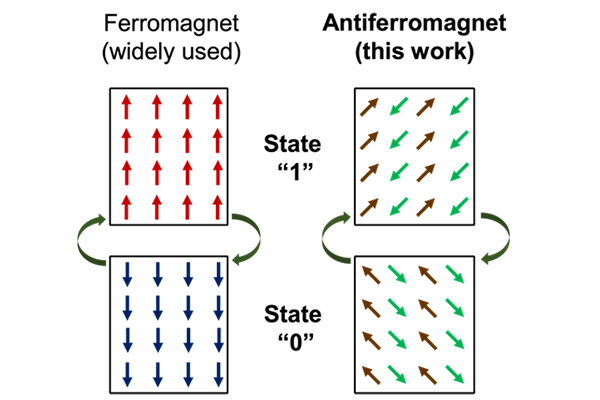The quest for high throughput intelligent computing paradigms - for big data and artificial intelligence - and the ever-increasing volume of digital information has led to an intensified demand for high-speed and low-power consuming next-generation electronic devices. The "forgotten" world of antiferromagnets (AFM), a class of magnetic materials, offers promise in future electronic device development and complements present-day ferromagnet-based spintronic technologies (Fig. 1).

Fig.1: A schematic diagram of information storage using conventional ferromagnet (FM)-based spintronic devices (left) and the proposed antiferromagnets (AFMs)-based devices (right) (the arrows indicate magnetic moments). In FM-based devices (left), bits of information (state "1" or "0") are encoded in the orientation (red/up or blue/down) of the moments. The compensated structure of AFMs (right) entails unique advantages while posing significant hurdles at the same time. ©︎Samik DuttaGupta and Shunsuke Fukami
Formidable challenges for AFM-based functional spintronic device development are high-speed electrical manipulation (recording), detection (retrieval), and ensuring the stability of the recorded information - all in a semiconductor industry-friendly material system.
/Public Release. This material from the originating organization/author(s) might be of the point-in-time nature, and edited for clarity, style and length. Mirage.News does not take institutional positions or sides, and all views, positions, and conclusions expressed herein are solely those of the author(s).View in full here.





